*This post may contain affiliate links. Read more »
There are sadly lots of places on earth where it’s next to impossible to find sweet soy sauce from Indonesia. So this fast and just about effortless kecap manis recipe is going to make all of your dreams come true.
You’ve landed on the holy grail of condiments that take your Indonesian fried rice, tahu goreng, and bami goreng to the upper echelons of flavor. This recipe, tested and approved by over 400 recipe testers, is your shortcut to adding depth and complexity to your Southeast Asian cooking.
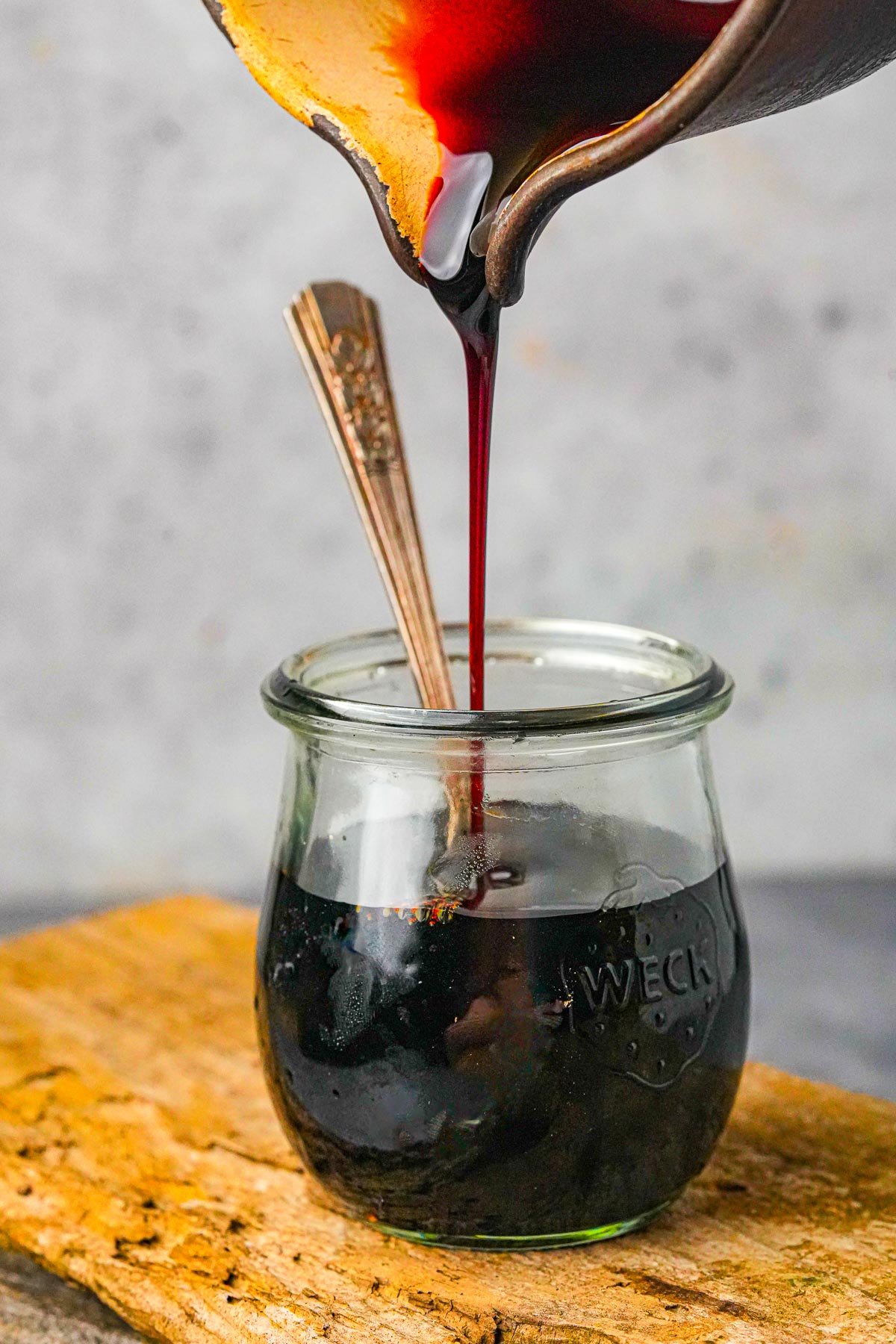

Enter your email & I'll send it to your inbox. Plus, get great new recipes from me every week!
By submitting this form, you consent to receive emails from Cinnamon Snail.
When putting this recipe together, I knew there were a couple of benefits I could offer that ABC kecap manis couldn’t touch. If you make this recipe with tamari, it’s completely gluten free, and if you avoid processed sugars like my wife does, it can be made using palm sugar or coconut sugar. This tried-and-true recipe simplifies the process into a one-pot banger that takes under 15 minutes to make and uses just a handful of pantry staples.
My recipe has a small bouquet of spices including star anise, ginger, peppercorns, and cloves, which give the sauce the perfect subtle hints to make it verrrrry hard to stop dipping your vegan spring rolls or gòi cuốn rice paper rolls into.
Join me on this quick dip into the world of traditional kecap manis and discover why homemade is always better!
Jump to:
What is Kecap Manis?
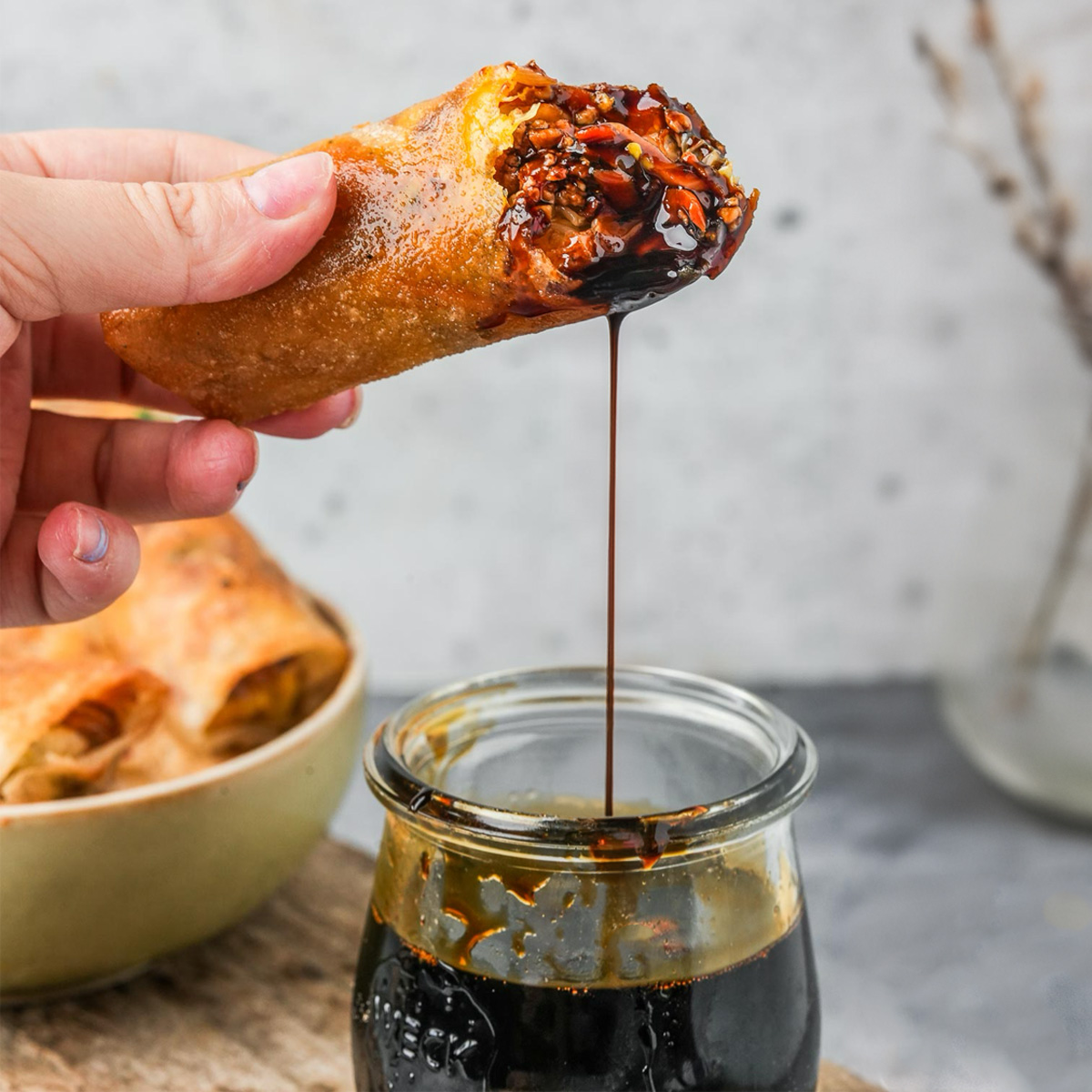
This dark sweet soy sauce is pure magic for transforming plain rice or noodle dishes into something seriously legendary.
Pronounced sorta like "Kah-Chop Mah-Nies," this sauce is actually the ancestor of our modern ketchup (see the similarity in the name?)… But WTF is up with that you might ask? Well, both salt (present in soy sauce) and sugar have the ability to preserve stuff. I mean, it’s only been a tiny portion of time in human history that we have been able to preserve food through refrigeration, and an even slightly shorter time in Southeast Asia.
So, in Indonesia, the original sweet-salty sauce, sometimes also spelled ketjap manis, was a staple for preserving fish and meats. That is why there are still some modern manufactured kecap manis brands that use fish ingredients in them. Of course, if you are vegetarian, there is always the ABC brand that makes kecap manis (both in regular, and more mild sweetness) in its now iconic red- or yellow-topped bottles, or, you can follow my recipe to easily make the stuff at home in better quality for less money.


Warning: This Will Transform Your Vegan Indo Cooking!
This 6-day plant-based deep dive into the vibrant cuisine of Indonesia is 100% FREE.
🥰Why you’ll adore this kecap manis recipe
✊Vegan AF & GF: Like all of my vegan Indonesian recipes, this kecap manis doesn’t contain any belecan (shrimp paste), and for sure no ayam (chicken ingredients of any kind)! Because you can make my recipe using tamari instead of soy sauce, it’s also potentially one of my gluten-free vegan recipes too!
🕒 Quick and Easy: Whip up this kecap manis in under fifteen minutes with just a single saucepan and a strainer.
🛒 Simple Pantry Staples: Made with easy-to-find ingredients like soy sauce and common pantry spices, this recipe helps you skip the Asian market run.
✅ Tested and Approved Worldwide: Like all of the vegan recipes I share, this kecap manis has been rigorously tested and approved by a giant team of recipe testers who work with me from all around the world, guaranteeing success wherever you are.
🍶Ingredients in Kecap Manis

Soy Sauce
In Indonesia, soy sauce is made from fermented soybeans, wheat, salt, and sometimes sugar. You can use regular ol’ soy sauce for this recipe, nama shoyu for a richer taste, or tamari to make it completely gluten free (tamari isn’t processed with wheat in it).
Sugar
I am all about making this sauce with either palm sugar or coconut sugar, but you can get away with brown sugar too. Palm sugar, which is made from the sap of palm trees, is the traditional way to go. I like to get granulated palm sugar because it is easy to measure and work with for tons of Southeast Asian desserts like ondeh ondeh, kuih dadar, bubur sumsum, and tupig.
Molasses
Not everyone uses molasses in their kecap manis recipes, but after a lot of testing and tweaking I found that a small amount helps to give the sauce a deeper flavor and darker color. Actually, one of my recipe testers who learned to cook in Indonesia told me that in poorer communities in Indonesia, it's common for people to make kecap manis only with molasses and soy sauce, and nothing else. If you don’t have molasses, you can still make this recipe without it.
Star Anise
Native to China and Vietnam, star anise is a star-shaped spice with a licorice-like flavor. I use these pretty stars in all sorts of stuff from my chili garlic sauce recipe to madras curry powder, and sometimes as an addition to my vegan Thai tea and bandrek, the sweet, spiced Indonesian tea my family is addicted to.
If you don’t have star anise, you can substitute a tiny sprinkle of anise seeds (the tiny little seeds you might use to make recipes like Peruvian picarones).
*See the recipe card at the bottom of the page for exact quantities, nutritional info, and detailed cooking directions.
🤯Variations
Balinese Kecap Manis:
Bali really does have its own culinary vibe that sets it apart from other places in Indonesia. Here is where you find dishes like urap sayur and nasi goreng sometimes made with bumbu Bali in it. Kecap manis served with grated fresh coconut added to it as a condiment is not unheard of, and damn it, it’s really yummy.
Javanese Kecap Manis:
Add a dash of Indonesian kecap inggris (similar to Worcestershire sauce) for a deeper umami flavor. Just make sure you either find a vegan one or make it yourself if you don’t eat fish. Javanese kecap manis commonly features galangal slices and a touch of coriander seeds, which get strained out after it simmers.
📖 How to make kecap manis
Make this Indonesian sweet soy sauce perfectly on your first shot by following these step-by-step photos with helpful tips. Or scroll down to the bottom of this page for the easy-to-print recipe card.

Step One
Prep the Pot:
Stir together the soy sauce of your choice, palm sugar (or coconut or brown sugar), molasses, star anise, ginger, peppercorns, and cloves in a saucepan.

Step Two
That Caramel Goodness:
Place the saucepan over medium heat and bring the mixture to a rolling boil.

Step Three
Simmer to Perfection:
As soon as the pot is boiling, reduce heat to low and simmer gently for 10 minutes, stirring occasionally.

Step Four
Strain and Cool:
Pour the hot sauce through a fine mesh strainer into a jar to remove whole spices.
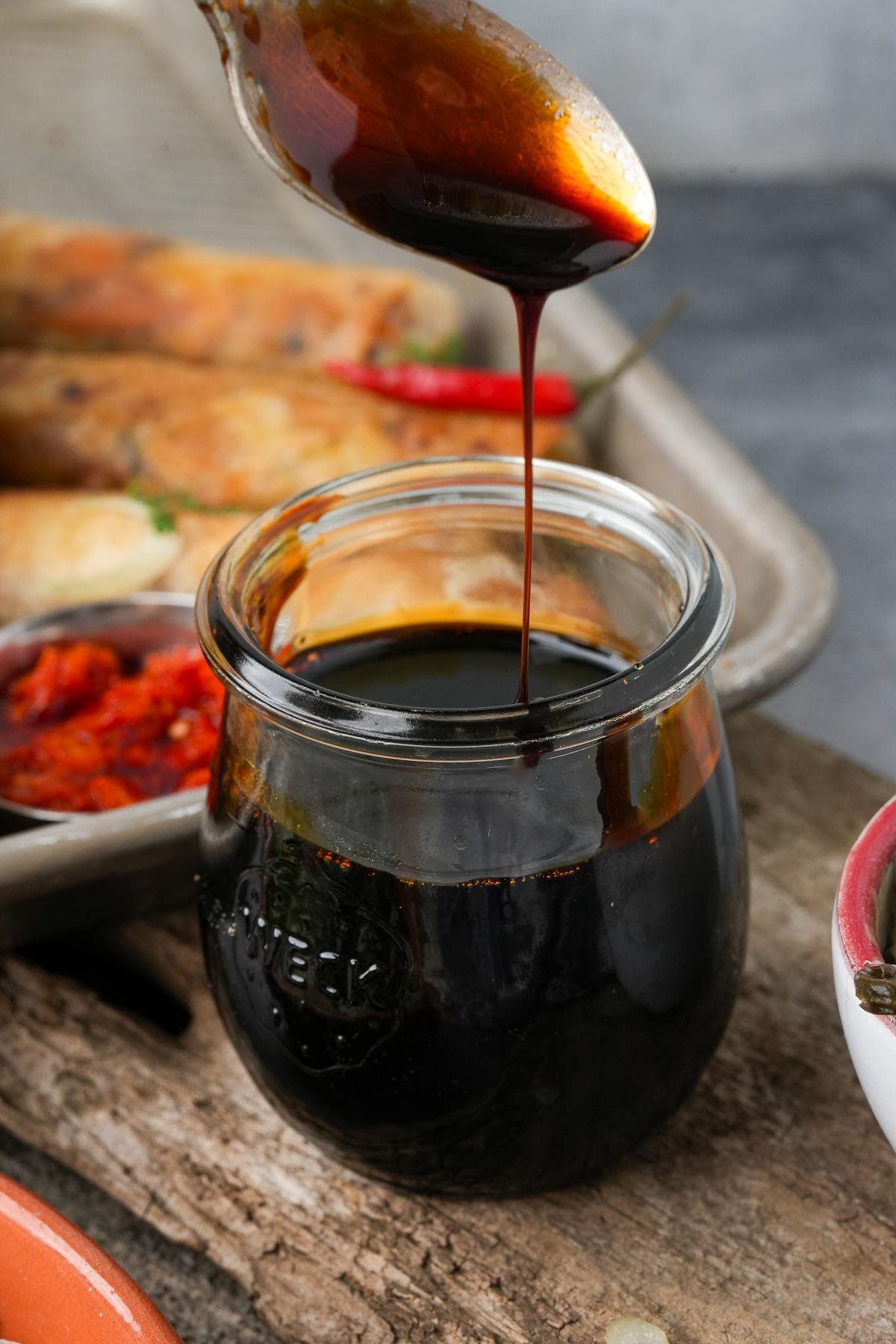
Step Five
Chill Out:
Allow the kecap manis to cool to room temperature, then refrigerate for long-term storage.
💡Serving Ideas
Kecap manis is necessary for making Indonesian fried noodles like bihun goreng and it's also pretty fantastic in mi xao xi dau. Some folks use it in making one of Indonesia’s best-known dishes, sambal goreng tempeh too!
But the stuff is also just great to use as a dipping sauce for rice dumplings, Filipino lumpiang Shanghai (either pan fried or cooked in an air fryer), or to drizzle into Vietnamese bánh bao chay.
Want to sweeten up your vegan bánh mì? Kecap manis is the easy answer.
Want to darken your Vietnamese peanut sauce? Kecap manis!
Heck its balance as sweet and salty even makes it nice to dip pisang goreng (Indonesian crispy fried bananas), and turon (Filipino jackfruit and saba banana spring rolls) into!
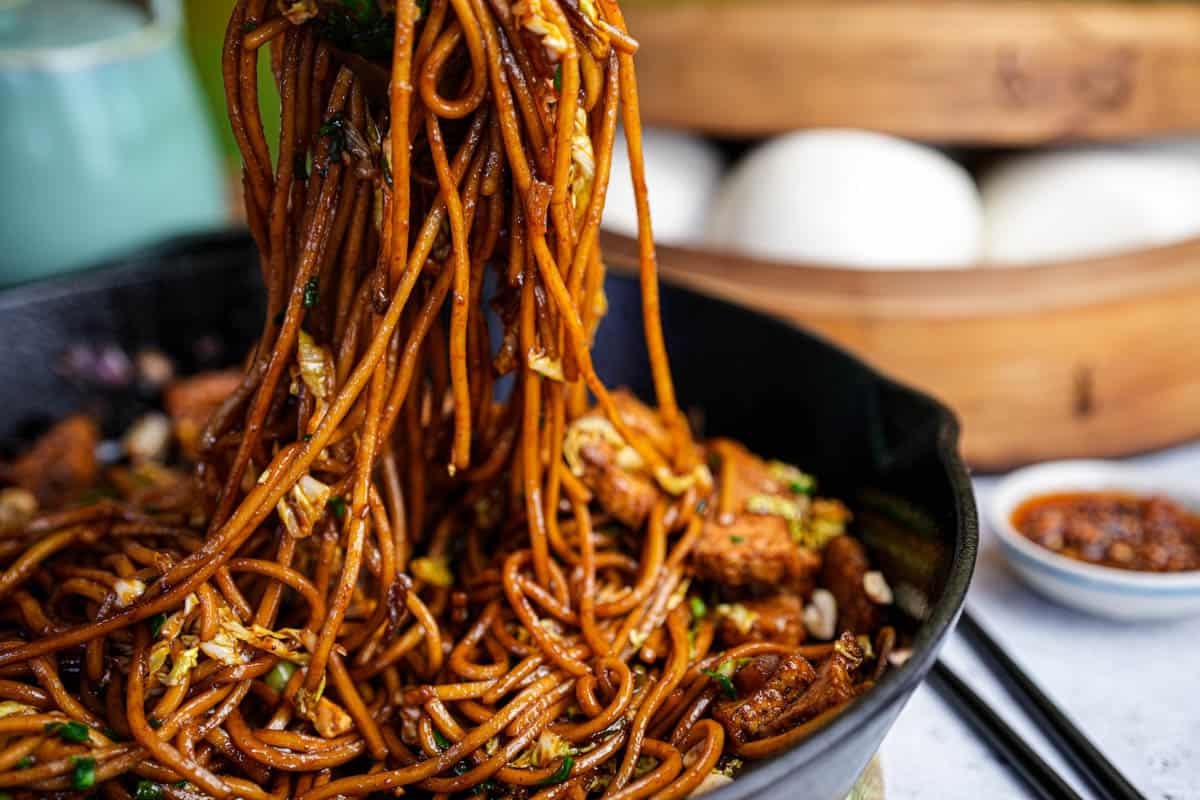
👉Top tips
- Don’t Boil for Long: If you cook on high heat for longer than it takes to get the sauce bubbling, it will form a thick soy caramel and might become lumpy and less smooth to pour. If this happens, once cool you can add a spoonful of water and whisk or blend the sauce to get rid of lumps, but the flavor of the caramelized soy will be different.
- Strain for Smooth Texture: Straining the sauce through a fine wire mesh strainer after cooking not only removes whole spices but helps to give the sauce a smooth, velvety texture.
- Cool Before Storing: Let the kecap manis cool completely before transferring to a jar for storage in the refrigerator. This is not only better for the sauce’s keeping quality, but for food safety, it’s never a great idea to put hot things into your fridge.
🤷♀️ Recipe FAQs
Use kecap manis as a grill marinade for tofu, tempeh, or to stir fry veggies with. Toss vegan fried chicken in it to give the chicken a lovely glossy glaze. Drizzle it over Thai basil eggplant, vegan drunken noodles, or Indonesian rice dishes like nasi minyak, nasi kunyit, or nasi uduk, for a sweet-salty flavor boost.
Substitute coconut sugar or brown sugar for palm sugar in equal amounts for a similar sweetness and depth of flavor.
Homemade kecap manis can be stored in the refrigerator for many months in a sealed jar or container. I have never actually met the upper limits of just how long it lasts, because I always use mine up before it gets there, but I bet it would last as long as a year if stored in a clean glass jar or airtight container under refrigeration.
There is no reason to do this evil deed. Please don’t. I mean the stuff is so easy to make fresh when you need it, and stores so well anyway. Freezing kecap manis will mess up its texture and waste valuable space in your freezer.
✌️My faves to make with kecap manis:

Kecap Manis Recipe (Indonesian Sweet Soy Sauce)
Equipment
- mason jar
Ingredients
- ½ cup soy sauce tamari or shoyu
- ½ cup palm sugar coconut sugar, or brown sugar
- 1 teaspoon molasses
- 1 whole whole star anise
- 2 thin slices of fresh ginger
- ½ teaspoon black peppercorns
- 2 cloves
Instructions
- Place all ingredients into a saucepan and bring up to a boil over medium heat.
- As soon as the contents of the pot are bubbling, reduce the heat to a simmer, and cook the sauce, stirring occasionally for 10 minutes to thicken it.
- While the sauce is still hot, pour it through a strainer into a jar to remove the whole spices.
- Cool the sauce and store in the refrigerator. The kecap manis will stay good in the refrigerator for months.
Notes

Enter your email & I'll send it to your inbox. Plus, get great new recipes from me every week!
By submitting this form, you consent to receive emails from Cinnamon Snail.

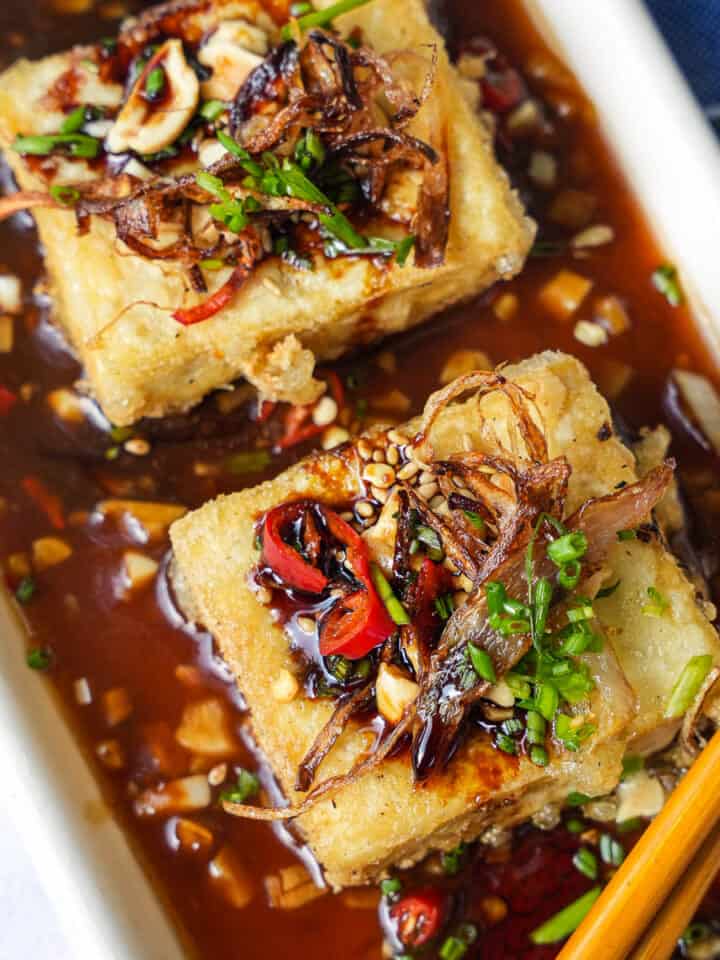

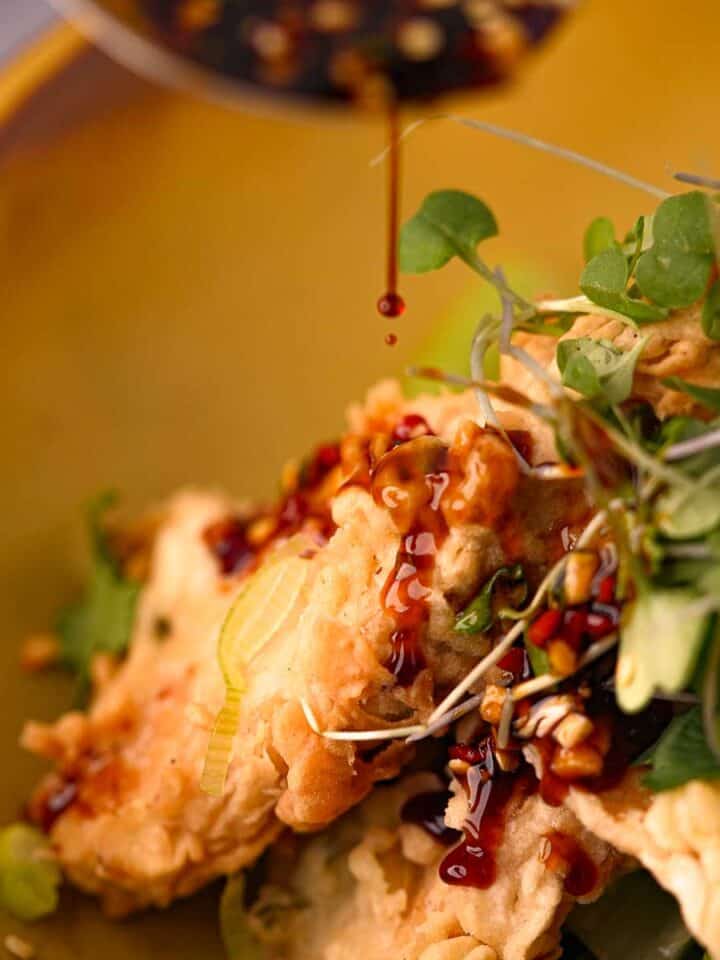
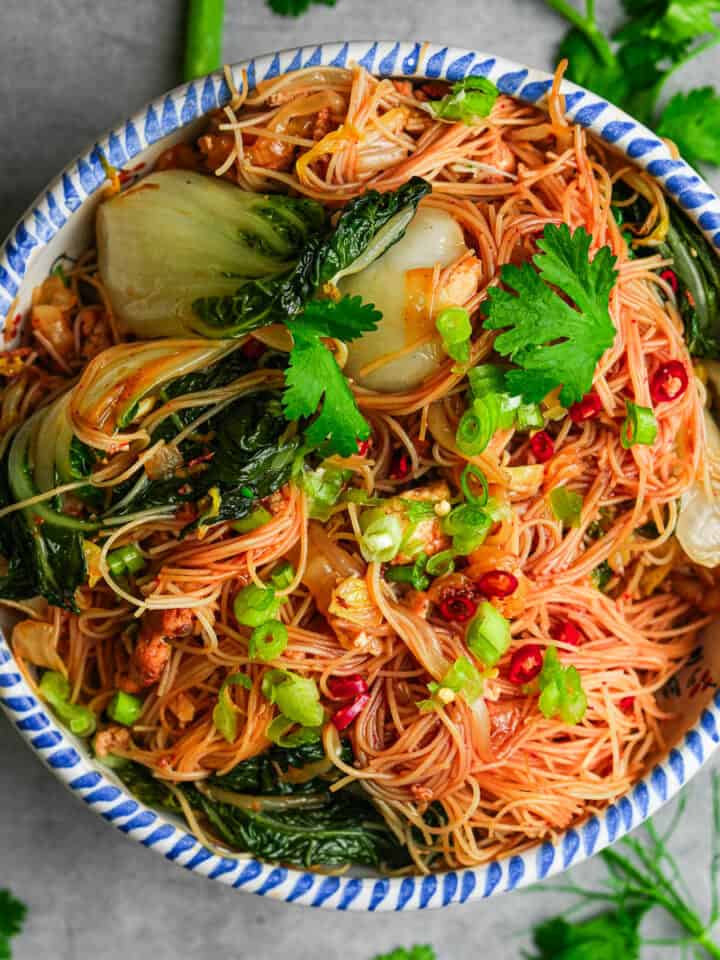




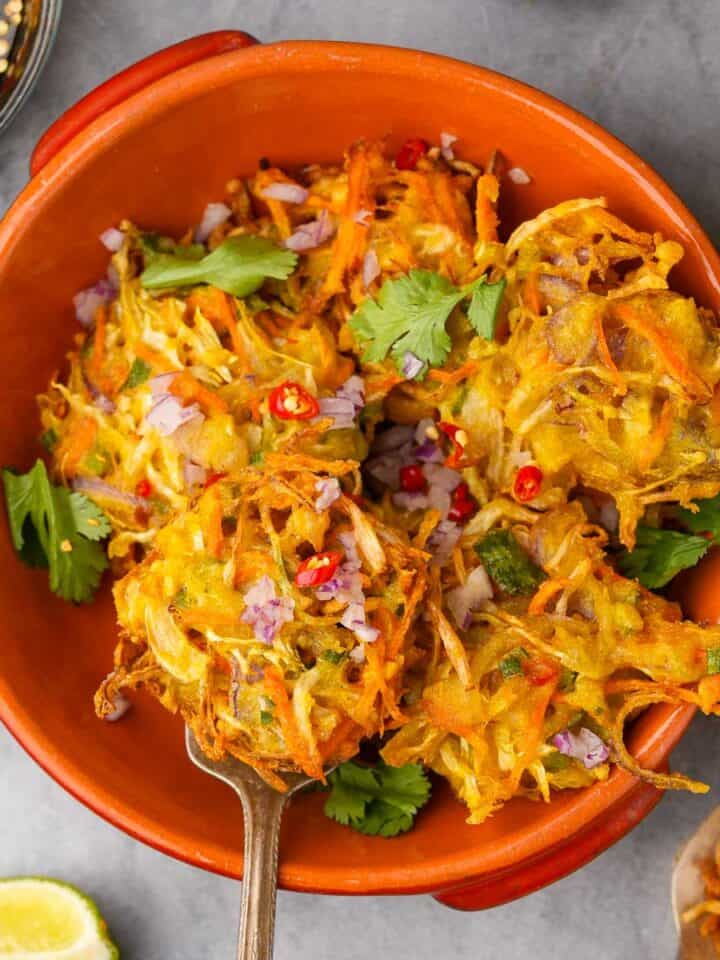
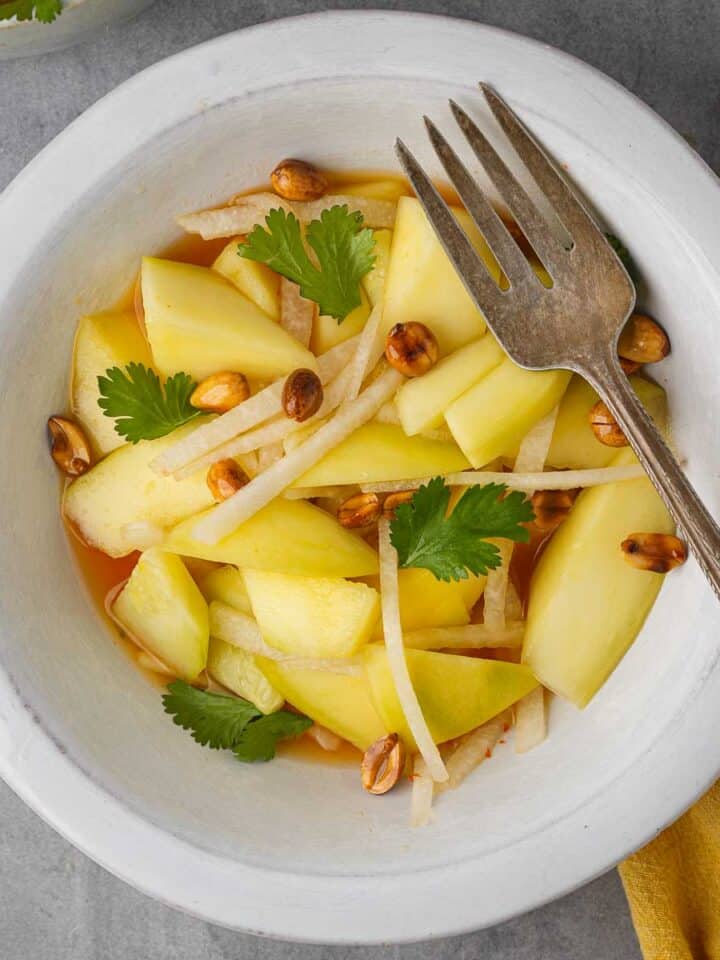
Amy says
Is the sodium content per serving based on using regular soy sauce, or is it per recipe using low sodium soy sauce? Is a serving otherwise 1 tablespoon or 1 teaspoon?
Adam Sobel says
The sodium content referenced in the nutritional information is just a basic calculated estimate. I make this with tamari which I would say is sorta middle of the road in terms of its sodium content. As far as the nutritional analysis goes, one serving of this recipe is equal to one ounce, which is about 2 tablespoons.
Kelly McLaughlin says
I prepped some of this sauce today and enjoyed it with some spring rolls. Easy to make and super delicious!
Carol Levine says
This is an amazing recipe and everyone should try it.